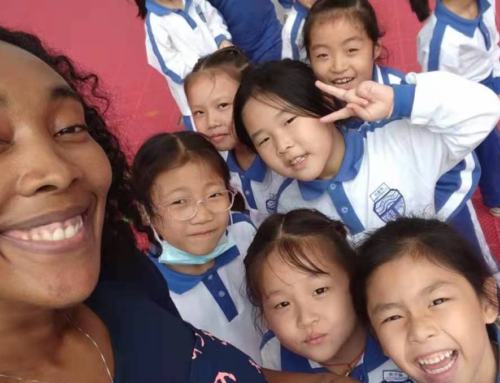Reliable Resources and Making Use of What’s Around
There are several courses to take when you become a TEFL teacher. You can do one online, over the course of a super intensive weekend, during the practical based month or spread out over several months with extra face to face contact with students. I took the month option with a focus on gaining it quickly with the added help of having classroom, hands-on, practice. For some people, perhaps with previous experience of teaching or more confidence in their abilities, a weekend course is all that they need. Doing a month long intensive course, whereby you are learning every day in a classroom environment, can be extremely useful when it comes to presentation, games and resource use.
to face contact with students. I took the month option with a focus on gaining it quickly with the added help of having classroom, hands-on, practice. For some people, perhaps with previous experience of teaching or more confidence in their abilities, a weekend course is all that they need. Doing a month long intensive course, whereby you are learning every day in a classroom environment, can be extremely useful when it comes to presentation, games and resource use.
Unfortunately, the classroom practice during my TEFL course was focused largely on teens and adults so when I came to York to teach younger learners, it was not something I had been introduced to. As I had said in a previous article, preparing a lesson for a group of older students is a totally different process. If you want to gain their attention normally, it would be found on the internet, world or national press, and focus largely on mind games over physical games.
For the younger learners, this is where props and resources come in to play and York School does a lot to encourage this type of learning. In every school teachers’ office, there are shelves after shelves of different items to take in to class and experiment with. Balls, whistles, jump ropes, hula hoops, hammers (the Timmy Mallet kind, not the iron kind), dice, card games, board games, fly swatters, bows and arrows, buckets, boxes, crayons, pens… and such and such. These are the staple of many a lesson and help to keep the younger folk keen to practice their grammar. If the target sentence is ‘Would you like to join the spelling club?’ how appealing is this to a ten year old to say? If you are in a competition with your friends to say the sentence and if you win you get to smash a plastic hammer against something, then this greatly increases the chance of them wanting to say it.
are shelves after shelves of different items to take in to class and experiment with. Balls, whistles, jump ropes, hula hoops, hammers (the Timmy Mallet kind, not the iron kind), dice, card games, board games, fly swatters, bows and arrows, buckets, boxes, crayons, pens… and such and such. These are the staple of many a lesson and help to keep the younger folk keen to practice their grammar. If the target sentence is ‘Would you like to join the spelling club?’ how appealing is this to a ten year old to say? If you are in a competition with your friends to say the sentence and if you win you get to smash a plastic hammer against something, then this greatly increases the chance of them wanting to say it.
Other lessons have clearer and easier methods of gaining the interest of the students. The most obvious uses of realia are in the food and drink lessons. Talking about smell, taste, texture and the names of digestible materials are a whole lot easier and more engaging when you have some real strawberries dangled in front of your class. So to do music and film classes which instantly become more fun for the teacher too when you can try and impress your students with how cool you are. This attempt will always fail, but nonetheless it’s always good fun.
digestible materials are a whole lot easier and more engaging when you have some real strawberries dangled in front of your class. So to do music and film classes which instantly become more fun for the teacher too when you can try and impress your students with how cool you are. This attempt will always fail, but nonetheless it’s always good fun.
The effort of incorporating the resources in to a class can be hard sometimes but the benefits are always positive, as it is infinitely more enjoyable and intriguing than a teacher droning on to a class of bored youngsters. Within an open spaced classroom, it can be a little dangerous with students running around using them, but in a controlled manner, it is a great way for students to pick up useful English.
With the amount of resources available there should be multiple variants for different class structures which not only ensures that the students don’t get bored, but also so that the teachers and T.A’s don’t get bored either.

















Leave A Comment